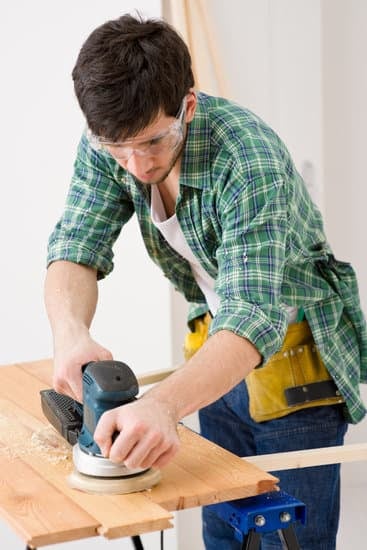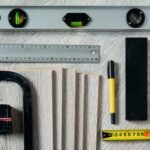When it comes to financing home improvements, homeowners often explore various options to fund their projects. One potential avenue that individuals may consider is using funds from their Individual Retirement Accounts (IRAs). In this article, we will delve into the possibility of utilizing an IRA to finance home improvements and provide valuable insights on the matter.
Understanding the basics of Individual Retirement Accounts is crucial before delving into their potential use for home improvement expenses. IRAs are investment accounts designed to help individuals save for retirement while offering tax advantages. These accounts come in different types, including traditional IRAs and Roth IRAs. Familiarizing oneself with the characteristics and regulations surrounding these accounts is essential before considering using them for home improvement funding.
While utilizing an IRA for home improvements may seem like an appealing option, there are certain rules and regulations that need to be considered. This includes understanding what qualifies as “qualified” home improvement expenses and the specific process involved in withdrawing funds from your IRA. Additionally, exploring the pros and cons of using an IRA for these purposes can help homeowners make informed decisions about whether it is the right choice for them.
In the following sections, we will further explore traditional and Roth IRAs and compare their suitability when it comes to covering home improvement expenses. We will also address potential tax implications that may arise from utilizing an IRA for this purpose, alongside alternative financing options available to homeowners.
With expert tips and real-life success stories included throughout the article, readers will have a comprehensive understanding of using an IRA for home improvements and can decide if it aligns with their financial goals and circumstances.
Understanding Individual Retirement Accounts (IRAs)
Types of IRAs
Before diving into the details of using an IRA for home improvements, it’s important to understand the different types of IRAs available. The two most common types of IRAs are Traditional IRAs and Roth IRAs.
Traditional IRAs are funded with pre-tax contributions, meaning that the money you contribute is not taxed until you withdraw it during retirement. This can provide a tax break in the current year if you qualify for the deduction. On the other hand, Roth IRAs are funded with after-tax dollars, which means that your contributions are not tax-deductible. However, when you withdraw funds from a Roth IRA during retirement, those withdrawals are tax-free.
Contributions and Withdrawals
IRAs have contribution limits set by the Internal Revenue Service (IRS). In 2020 and 2021, the contribution limit for both Traditional and Roth IRAs is $6,000 per year for individuals under 50 years old. Individuals who are 50 years or older can make catch-up contributions of an additional $1,000 per year.
Withdrawals from both Traditional and Roth IRAs before age 59½ may be subject to early withdrawal penalties unless certain exceptions apply. However, there are different rules related to distributions that can be useful when considering using an IRA for home improvements.
Qualified Distributions for Home Improvements
In order to use funds from your IRA for home improvements without incurring penalties, you would need to meet certain conditions set by the IRS. To qualify for a penalty-free withdrawal from either a Traditional or Roth IRA for home improvement expenses, these expenses must be considered “qualified distributions” under IRS guidelines.
According to IRS rules, qualified distributions from an IRA can be used for costs directly related to the purchase, construction or reconstruction of a first home for yourself or a qualified family member. Home improvements that increase the value or usefulness of your home may also qualify, as long as they do not repair any damage caused by normal wear and tear or address aesthetic changes that don’t contribute to the overall value of the home.
It’s important to keep in mind that even if you meet the IRS guidelines for qualified distributions, you may still owe income taxes on the amount withdrawn from a Traditional IRA since those contributions were made with pre-tax dollars. Roth IRAs, on the other hand, allow for tax-free withdrawals of qualified distributions, so no additional taxes are owed.
The Key Rules and Regulations
Understanding the IRS Rules and Regulations
Before considering using your IRA funds for home improvements, it is crucial to understand the key rules and regulations set forth by the Internal Revenue Service (IRS). These rules outline the eligibility criteria, withdrawal limits, and potential penalties associated with using an IRA for non-retirement purposes.
Eligibility Criteria for Using an IRA for Home Improvements
To use your IRA funds for home improvements, you must meet certain eligibility criteria. Firstly, you must be at least 59 ½ years old to avoid incurring early withdrawal penalties. Additionally, you should have a traditional or Roth IRA account established, as these are the two main types of IRAs that allow for non-retirement expenses like home improvements.
Withdrawal Limits and Penalties
While using your IRA for home improvements is allowed under certain circumstances, there are withdrawal limits and potential penalties to be aware of. For traditional IRAs, any withdrawals from the account are subject to income tax. Additionally, if you withdraw funds before reaching age 59 ½, you may be subject to an additional early withdrawal penalty of 10%.
For Roth IRAs, the rules differ slightly. Contributions made to a Roth IRA can typically be withdrawn at any time without taxes or penalties since they were made with after-tax money. However, earnings on those contributions may be subject to taxation and penalties if withdrawn before reaching age 59 ½.
It’s important to note that both traditional and Roth IRAs have annual contribution limitations that need to be considered when deciding how much money can be used for home improvements.
Overall, it is crucial to consult with a financial advisor or tax professional who can guide you through the specific rules and regulations pertaining to your individual situation before making any decisions regarding using your IRA funds for home improvements.
Pros and Cons of Using an IRA for Home Improvements
Using an IRA to finance home improvements can have both benefits and considerations that should be carefully weighed. One of the main advantages of using an IRA for home improvement expenses is the potential tax benefits. If you have a traditional IRA, withdrawals for qualified home improvement expenses may be considered as qualified distributions, meaning they are exempt from early withdrawal penalties. This can help you avoid paying the usual 10% penalty for withdrawing funds before age 59 ½.
Another benefit is that using an IRA for home improvements allows you to tap into your retirement savings without having to go through a complicated loan application process or pay interest rates associated with other financing options. It gives you more control over how you use your retirement savings and allows you to invest in improving the value of your own property.
However, there are some important considerations to keep in mind before deciding to use your IRA for home improvements. One key consideration is the impact it will have on your long-term retirement savings. Withdrawing funds from your IRA means reducing the amount of money that has the potential to grow tax-free over time, potentially impacting the overall size of your nest egg when you retire.
Additionally, if you withdraw a substantial amount from your IRA for home improvements, it could push you into a higher tax bracket in the year of withdrawal. This means that not only will you owe taxes on the withdrawn amount, but also on any additional income that results from moving up into a higher bracket. It’s important to accurately calculate and understand these potential tax implications before making a decision.
Exploring Traditional and Roth IRAs
When considering using an IRA to finance home improvements, it is essential to understand the differences between a Traditional IRA and a Roth IRA. Each type of account has its own advantages and considerations when it comes to funding home improvement expenses.
Traditional IRAs
Traditional IRAs are tax-deferred accounts, meaning that contributions are made with pre-tax dollars, and taxes are only paid upon withdrawal during retirement. Because of this, the ability to withdraw funds for non-retirement purposes, such as home improvements, comes with certain limitations and potential penalties.
One key consideration is that if you withdraw funds from a Traditional IRA before reaching age 59½, you may be subject to a 10% early withdrawal penalty on top of ordinary income tax. However, there are exceptions to this penalty for qualified distributions used for qualifying expenses such as higher education expenses or first-time home purchases.
While home improvement expenses do not fall within these exceptions, they can still be considered as part of a first-time home purchase if the improvements are made within 120 days after the purchase of the home.
Roth IRAs
Roth IRAs operate differently from Traditional IRAs in terms of taxation. Contributions made to a Roth IRA are with after-tax dollars, meaning that withdrawals in retirement are tax-free. The key advantage of a Roth IRA when it comes to financing home improvements is that contributions can be withdrawn at any time without incurring taxes or penalties.
However, it’s important to note that any earnings on your contributions cannot be withdrawn without facing taxes and penalties if you don’t meet certain criteria. This means that if your Roth IRA has earned investment gains over time and you wish to use those funds for home improvements, you may face taxes and penalties unless you meet specific requirements.
Overall, both Traditional and Roth IRAs have their own pros and cons when it comes to using them for home improvement expenses. It is recommended to consult with a financial advisor or tax professional to understand the specific implications and considerations based on your individual circumstances before making a decision.
Exploring the Qualified Home Improvement Expenses
When considering using an Individual Retirement Account (IRA) to finance home improvements, it is important to understand which expenses can be covered by these funds. While IRAs can provide a valuable source of financing for home improvements, there are specific rules and regulations regarding what qualifies as a qualified expense.
Qualified home improvement expenses that can be covered using an IRA include:
1. Major renovations: This includes significant upgrades or additions to your home, such as remodeling a kitchen or bathroom, adding a room, or finishing a basement. These types of expenses can add value to your property and improve your overall living conditions.
2. Energy-efficient improvements: Installing energy-efficient features in your home, such as solar panels, energy-efficient windows, or insulation upgrades, may also be considered qualified expenses. These improvements not only enhance the comfort of your home but can also lead to long-term cost savings on energy bills.
3. Disability accommodations: Making modifications to your home to accommodate disabilities or special needs may qualify as a qualified expense. This could include installing ramps, widening doorways, or adding safety equipment like grab bars in bathrooms.
On the other hand, there are certain expenses that do not qualify as eligible for IRA withdrawals for home improvements:
1. Regular repairs and maintenance: Routine repairs and maintenance that are typically expected in homeownership, such as fixing leaky faucets or repairing broken appliances, cannot be covered by an IRA.
2. Cosmetic upgrades: Expenses related solely to cosmetic enhancements, such as painting the interior or exterior of your home or replacing flooring purely for aesthetic purposes, do not meet the criteria for qualified expenses through an IRA.
3. New furniture and furnishings: While upgrading furniture and purchasing new furnishings may improve the overall appearance of your home, these expenses are not considered qualified home improvement expenses under an IRA.
When using an IRA to cover home improvement costs, it is crucial to consult with a financial advisor or tax professional to ensure that your planned expenses meet the necessary criteria and abide by IRS regulations. Understanding what qualifies as a qualified expense can help you make informed decisions when utilizing your IRA for home improvements.
The Process
Once you have determined that using your IRA for home improvements is the right choice for you, it is important to understand the process of withdrawing funds from your IRA. Here are the steps involved in accessing your IRA funds for home improvement expenses:
- Review IRS Regulations: Before proceeding with any withdrawals, it is crucial to understand the rules and regulations set by the IRS for using IRAs for home improvements. Make sure you meet all eligibility requirements and are aware of any penalties or taxes that may apply.
- Determine Eligible Expenses: Identify the specific home improvement expenses that qualify under IRS guidelines. These typically include expenses that improve the value of your primary residence, such as renovations, additions, or energy-efficient upgrades. Items like furniture or appliances usually do not qualify.
- Calculate Withdrawal Amount: Determine the amount of funds you need to withdraw from your IRA to cover the approved home improvement expenses. Consider consulting a financial advisor or tax professional to help you make an informed decision regarding withdrawal amounts and impacts on your retirement savings.
- Request a Distribution: Contact your IRA custodian to initiate a distribution request. Specify that you want to withdraw funds for qualified home improvement expenses, providing them with all the necessary documentation, such as estimates or invoices from contractors.
- Complete Required Forms: Your IRA custodian will provide you with forms to complete, which may include specific details about the purpose of withdrawal and a justification for using IRA funds instead of alternative financing options.
- Wait for Processing: After submitting the required forms and documentation, allow time for processing by your custodian. The timeline may vary depending on their internal procedures but generally takes around 7-10 business days.
- Receive Funds: Once your withdrawal request has been approved and processed by your custodian, you will receive the funds either through direct deposit into your bank account or by check.
It is essential to keep detailed records of all withdrawals made from your IRA for home improvements. This includes invoices, receipts, and any other relevant documentation that demonstrates how the funds were used to cover eligible expenses. Maintaining these records will help you provide necessary evidence in case of an audit by the IRS.
Remember, before making any decisions regarding IRA withdrawals, it is highly recommended to consult with a financial advisor or tax professional who can provide personalized advice based on your individual circumstances. They can guide you through the process and help ensure that you are making informed choices while protecting your retirement savings.
Potential Tax Implications
One important aspect to consider when using an IRA to finance home improvements are the potential tax implications. It is crucial to understand how using your IRA for this purpose may affect your tax situation.
Firstly, it is important to note that if you withdraw funds from a traditional IRA before reaching the age of 59 ½, you will generally be subject to a 10% early withdrawal penalty in addition to ordinary income taxes on the withdrawn amount. However, there are some exceptions to this penalty, and one such exception is for qualified home improvement expenses.
To qualify for this exception, the home improvement expenses must meet certain criteria. For example, they must be considered capital expenses that increase the value of your home. Some examples of qualifying expenses include adding a room or remodeling a kitchen. On the other hand, routine repairs and maintenance would not qualify.
Another factor to consider is whether you have a traditional IRA or a Roth IRA. With a traditional IRA, withdrawals are taxed as ordinary income in the year in which they are taken. Therefore, using your traditional IRA for home improvement expenses could potentially increase your taxable income for that year.
Conversely, with a Roth IRA, contributions are made with after-tax dollars and qualified distributions (including those used for home improvement expenses) are tax-free. This means that if you use funds from your Roth IRA for qualified home improvement expenses, you will not incur any additional taxes on those withdrawals.
It is essential to consult with a financial advisor or tax professional before making any decisions regarding using your IRA for home improvements. They can help assess your individual circumstances and provide guidance on potential tax implications specific to your situation.
| Tax Implications | Effects |
|---|---|
| Early withdrawal penalty | 10% penalty may apply if withdrawing from traditional IRA before age 59 ½ |
| Qualifying expenses | Home improvement expenses must meet certain criteria to qualify for an exception to the early withdrawal penalty |
| Taxation of withdrawals | Withdrawals from traditional IRAs are taxed as ordinary income, potentially increasing taxable income for that year |
| Tax implications for Roth IRA | Qualified distributions from a Roth IRA, including those used for home improvement expenses, are tax-free |
Alternatives to Using an IRA for Home Improvements
When it comes to financing home improvements, using an Individual Retirement Account (IRA) may not be the best option for everyone. While an IRA can provide flexibility and tax advantages, there are alternative financing options worth considering. Exploring these alternatives can help you make an informed decision that aligns with your financial goals and circumstances.
One alternative to using an IRA is taking out a home equity loan or line of credit. These loans allow you to borrow against the equity in your property and use the funds for home improvements. The advantage of a home equity loan or line of credit is that the interest rates are usually lower than other types of loans. Additionally, the interest paid on these loans may be tax-deductible, making them a potentially more affordable option.
Another financing option to consider is a personal loan. Personal loans are unsecured loans that can be used for various purposes, including home improvements. They typically have fixed interest rates and repayment terms, which can make budgeting easier. Personal loans may not have the same tax advantages as using an IRA, but they offer more flexibility in terms of usage and repayment.
Lastly, you could explore government programs or grants specifically designed for home improvement projects. Many local and state governments offer programs that provide financial assistance or low-interest loans to homeowners looking to make improvements or upgrades. There might also be grants available through non-profit organizations or foundations aimed at supporting housing initiatives.
In summary, while an IRA can be a viable option for financing home improvements, exploring alternative financing options is essential. Home equity loans or lines of credit, personal loans, and government programs/grants are all potential alternatives to consider based on your specific needs and financial situation. Before making a decision, it’s important to carefully evaluate each option’s terms and benefits to ensure you choose the most suitable method for funding your home improvement project.
Expert Tips and Advice
When considering using an IRA to finance home improvements, it is important to seek expert tips and advice to ensure you make the most out of this financial opportunity. Here are some recommendations to help you maximize the benefits of using an IRA for home improvements:
- Consult with a Financial Advisor: Before making any decisions regarding your IRA, it is advisable to consult with a qualified financial advisor who specializes in retirement planning. They can provide personalized advice based on your specific financial situation and goals. They will evaluate whether using your IRA for home improvements is the right choice for you or if there are alternative options that may be more suitable.
- Understand the Potential Tax Implications: Withdrawing funds from your IRA may have tax consequences, so it is crucial to fully comprehend the potential implications. A financial advisor or tax professional can guide you through the tax rules associated with using an IRA for home improvements. They can help you understand how much tax you may owe and if there are any exemptions or deductions available.
- Evaluate Your Long-Term Retirement Goals: While using an IRA for home improvements can provide immediate financial assistance, it is essential to consider the long-term impact on your retirement savings. Assessing how using these funds now will affect your overall retirement plan is crucial to determine if it aligns with your future goals. A financial advisor can assist in evaluating the potential trade-offs between short-term needs and long-term security.
| Expert Tips | Recommendations |
|---|---|
| Consult with a Financial Advisor | Seek guidance from a qualified professional specialized in retirement planning. |
| Understand the Potential Tax Implications | Evaluate the tax rules and consequences associated with using an IRA for home improvements. |
| Evaluate Your Long-Term Retirement Goals | Assess the impact of using IRA funds on your overall retirement plan and future goals. |
Remember, every individual’s financial situation is unique, so it is crucial to consider these expert tips in the context of your specific needs and objectives. Investing time and effort in proper planning and seeking professional advice will help you make an informed decision regarding the use of your IRA for home improvements.
Real-Life Examples and Success Stories
One of the best ways to understand the potential benefits of using an IRA to finance home improvements is by looking at real-life examples and success stories. These stories not only provide insight into how individuals have successfully utilized their IRAs for home improvements but also offer inspiration and ideas for those considering doing the same. Here are a few examples:
- Jane’s Story: Jane had been diligently contributing to her traditional IRA for many years, with the goal of one day using it for a major home renovation project. When the time came, she withdrew funds from her IRA to pay for a kitchen remodel.
This allowed her to transform her outdated kitchen into a modern space that increased the value of her home significantly. Jane’s story is an example of how using an IRA can be a smart financial move that not only improves your living space but also adds value to your property. - John and Mary’s Story: John and Mary were nearing retirement when they decided to use their Roth IRA funds to make some necessary accessibility modifications to their home. They used the money to install ramps, widen doorways, and add handrails throughout the house, making it easier for them as they age.
By utilizing their Roth IRA funds for these improvements, they were able to create a safer and more comfortable living environment that will benefit them for years to come.
These real-life examples highlight how individuals have successfully used their IRAs for various home improvement projects with positive outcomes. However, it’s important to remember that every individual’s situation is unique, and what worked well for one person may not necessarily be suitable or advantageous for another.
| Name | Project | Outcome |
|---|---|---|
| Jane | Kitchen remodel | Increased home value |
| John and Mary | Accessibility modifications | Safer and more comfortable living environment |
These success stories serve as valuable examples for those considering using their IRAs for home improvements. However, it’s crucial to thoroughly understand the rules, regulations, and potential tax implications before taking any action. Consulting with a financial advisor or tax professional can provide individualized guidance to ensure that using an IRA for home improvements aligns with specific financial goals and circumstances.
Conclusion
Making the decision to use your IRA funds for home improvements is a significant financial choice that should not be taken lightly. After exploring the various aspects of using an IRA for this purpose, it’s important to consider all the information before making a final decision.
First and foremost, understanding the key rules and regulations surrounding the use of an IRA for home improvements is crucial. Familiarizing yourself with these guidelines will help you make informed choices and avoid any unexpected penalties or taxes. Additionally, considering whether a Traditional or Roth IRA is better suited for your needs can also play a role in your decision-making process.
It’s also essential to carefully weigh the pros and cons of using your IRA for home improvements. While accessing these funds can provide you with a source of financing without taking on additional debt, it’s crucial to consider the potential tax implications and risks involved. Exploring other financing options may also be worth considering as an alternative to using your IRA.
Ultimately, when deciding whether to use your IRA funds for home improvements, it’s recommended to consult with a financial advisor who can provide personalized guidance based on your specific circumstances. Taking into account their recommendations, along with careful consideration of all the factors discussed in this article, will help you make an informed decision that aligns with your financial goals and priorities.
Frequently Asked Questions
Can you use retirement funds for home improvements?
Yes, it is possible to use retirement funds for home improvements. One common way to do this is through a home equity conversion mortgage (HECM) or reverse mortgage, which allows homeowners who are 62 years or older to borrow against the equity in their homes. The loan is repaid when the homeowner sells the property, moves out of the home, or passes away.
Another option is to take a distribution from an individual retirement account (IRA) early, which may incur taxes and penalties depending on the age of the account holder and other factors. It’s important to carefully consider the financial implications before using retirement funds for home improvements, as it can impact long-term savings and retirement plans.
Can you borrow against IRA for home purchase?
Generally, it is not possible to borrow against an IRA for a home purchase. However, there are some exceptions that allow individuals with certain types of IRAs – such as self-directed IRAs or 401(k) rollover IRAs – to invest in real estate properties, including residential homes.
This process usually involves creating a limited liability company (LLC) that acts as the owner of the property and is funded by the IRA. The IRA owner cannot personally benefit from this investment until they reach retirement age without facing potential tax consequences and penalties.
Is it smart to borrow from 401K for home improvement?
Borrowing from a 401K for home improvement should be considered carefully before making a decision. While it may seem like an attractive option since borrowers are essentially borrowing money from themselves with interest payments going back into their own accounts, there are potential risks involved. Withdrawing funds from a 401K can deplete retirement savings and hinder long-term financial goals if not repaid adequately or if market conditions aren’t favorable during repayment years.
Additionally, if one leaves their job before repaying the loan in full, they may be required to repay it immediately or have it treated as an early withdrawal subject to taxes and penalties. It is essential to thoroughly evaluate one’s financial situation and consider alternative options before deciding to borrow from a 401K for home improvement.

I’m thrilled to have you here as a part of the Remodeling Top community. This is where my journey as an architect and remodeling enthusiast intersects with your passion for transforming houses into dream homes.





